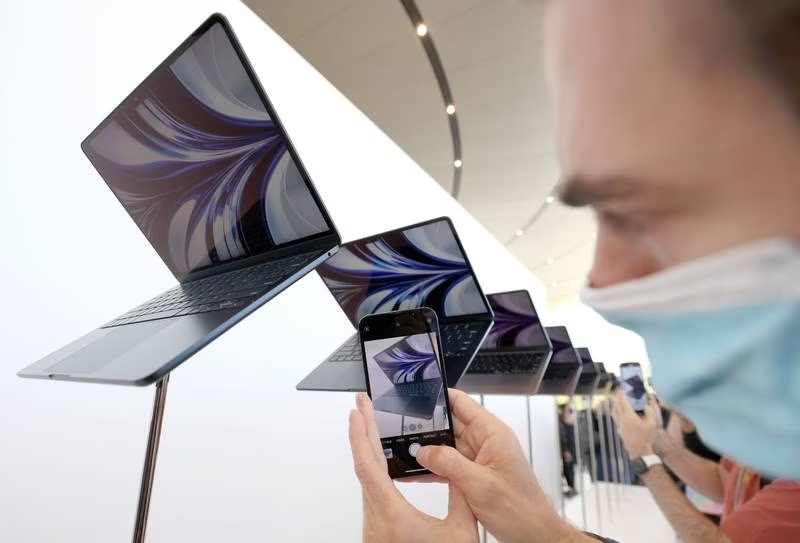Apple leads decline in global PC shipments in first quarter amid weak demand

Collected Image
Apple's global personal computer shipments dropped more than 40 per cent in the first quarter of 2023, leading the decline in the overall market as it battles weak demand, according to a report by the International Data Corporation.
Personal computer shipments by the US technology company, which ranks fourth on the IDC study, fell to 4.1 million units in the three months ended March compared with 6.9 million in the first quarter of 2022, according to preliminary results from the US research firm's quarterly industry update. The market share of the iPhone maker, which has a broad range of Mac desktops and MacBook laptops, also dropped to 7.2 per cent from 8.6 per cent a year earlier.
Lenovo, the world's biggest personal computer company, maintained its lead despite shipments dropping nearly a third to 12.7 million. Its market share also dropped to 22.4 per cent from 22.8 per cent in the first quarter of 2022. US company Hewlett-Packard was second in terms of market share with shipments of 12 million units, down nearly a quarter annually.
However, its market share rose to 21.1 per cent compared with 19.7 per cent a year ago, making it the only major vendor to post growth in this category.
Dell Technologies, another US company, saw its shipments decline almost 31 per cent to 9.5 million units, while Taiwan's Asus rounded out the top five with shipments declining more than 30 per cent annually to 3.9 million.
The rest of the vendors accounted for 14.7 million units shipped in the first quarter, down 26 per cent on an annual basis, and a market share of nearly 25 per cent.
“Though channel inventory has depleted in the last few months, it's still well above the healthy four-to-six week range,” said Jitesh Ubrani, research manager of the IDC's mobility and consumer device trackers. “Even with heavy discounting, channels and PC makers can expect elevated inventory to persist into the middle of the year and potentially into the third quarter.”
The preliminary results indicate that demand has moved on from the high Covid-era level, with the volume of shipments during the first quarter noticeably lower than the 60.6 million and 59.2 million units shipped in the same period in 2018 and 2019, respectively, the IDC said.
Manufacturers have been coping up with a number of challenges, including high interest rates, rising inflation and supply chain disruptions.
The US Federal Reserve raised interest rates last month — the ninth time since 2022 — by 25 basis points and hinted that more increases could follow to rein in inflation.
The International Monetary Fund, which has also warned of rising recession risks, expects global inflation to decline to 6.6 per cent in 2023, from 8.8 per cent last year, and fall further to 4.3 per cent in 2024. Russia's military offensive in Ukraine has also disrupted supplies and sent oil prices soaring, but the volatility has since eased more than a year into the conflict.
The lull in the personal computer market is also giving the supply chain some room to make changes as many factories begin to explore production options outside China, IDC said.
Manufacturers are also rethinking their plans for the remainder of the year and have begun to pull in orders for Google's Chromebooks due to an expected increase in licensing costs later this year.
“That said, PC shipments will likely suffer in the near term with a return to growth towards the end of the year with an expected improvement in the global economy and as the installed base begins to think about upgrading to Windows 11,” it said.
As of March 2023, Windows dominates the global personal computer operating system market with a share of almost 70 per cent, with Apple's macOS a distant second with more than 17 per cent followed by Google's Chrome with about 3.2 per cent, data from Statcounter shows.
Source: https://www.thenationalnews.com
Previous Story
- Apple releases security update to fix more than...
- Apple introduces new iPhone 14 and iPhone 14...
- Lower Apple iPhone sales lead to miss in...
- Japan Companies Turn to Apple Waste to Make...
- VR headset prices high as Apple bides its...
- Apple shares fall to lowest level since June...
- Apple will reportedly begin producing some MacBooks in...
- Mobile advert spending to hit $362bn in 2023...